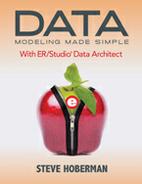Creating Data Movement Rules in ER/Studio
Data Movement rules describe the different ways in which source and target tables can be related. Types can include create, update, archive, backup, etc. You can relate source data to one or more tables and entities in the same model, the active diagram, or to tables imported from external systems. To add a data movement rule, click on the Data Lineage tab, and then choose the following command:
|
Menu |
Toolbar |
Explorer |
Shortcut Key |
Shortcut Menu |
|
n/a |
n/a |
Right-click the Data Flows node and then New Data Movement Rule |
n/a |
n/a |
The Data Movement Rule editor appears, as in Figure 12.10.
Figure 12.10 Data Movement Rule editor

There are two tabs on this screen:
|
Tab |
Here’s what you need to know: |
|
Rule Information |
Enter a name that indicates the operation and objects acted on, depending on the specifics of your binding definition. Under the Rule Type drop down, select the generic rule type that best describes the data movement, such as a create rule or archive rule. Under Rule Text, document your data movement plan here, perhaps adding instructions or contingency plans. |
|
Binding Information |
Select the object classes and/or specific objects to which you want to bind this attachment. You can override this setting using the Data Lineage tab of the entity. |
After clicking <OK> you will notice the new rule appearing in the Data Movement Rules folder.
